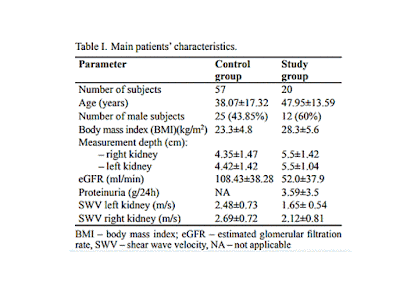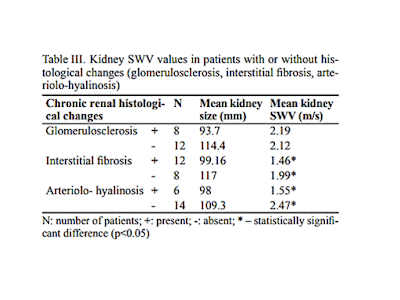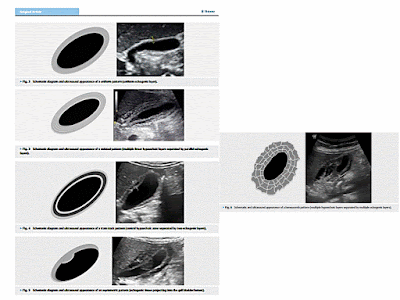February 1, 2018 -- It's safe to use ultrasound to track thyroid nodules that don't have suspicious features after fine-needle aspiration (FNA) biopsy -- although nodules with intermediate or highly suspicious features should be evaluated with another biopsy, according to research in the February issue of the American Journal of Roentgenology.
The findings address disagreement among researchers regarding how to handle nondiagnostic nodules, defined as nodules that can't be classified as malignant or benign after FNA biopsy, wrote a team led by Dr. Chae Jung Park of Yonsei University College of Medicine in Seoul, South Korea. Some professional groups recommend repeat fine-needle aspiration biopsy if a nondiagnostic nodule is solid at ultrasound examination, while others say this isn't necessary.
"Some researchers suggest that clinical and ultrasound follow-up may be more appropriate than repeat fine-needle aspiration after nondiagnostic biopsy regardless of ultrasound features because few malignancies are diagnosed in this population," the study authors wrote. "The purposes of this study were to evaluate the malignancy rate of nodules with nondiagnostic cytologic results ... and to establish management guidelines for these nodules according to the ultrasound patterns."
Safe and reliable
Ultrasound-guided FNA biopsy is considered a safe, reliable, and cost-effective way to distinguish between benign and malignant thyroid nodules. But the procedure can produce a nondiagnostic result if the sample isn't adequate, the group wrote (AJR, February 2018, Vol. 210:2, pp. 412-417).
In 2015, the American Thyroid Association (ATA) recommended repeat FNA biopsy for initially nondiagnostic nodules and surgical confirmation for nodules with suspicious ultrasound features, along with continued close follow-up with ultrasound for repeatedly nondiagnostic nodules without suspicious ultrasound features.
However, these guidelines have not been confirmed, Park and colleagues wrote.
"To our knowledge, no validation studies have been conducted to assess these management guidelines according to the 2015 ATA ultrasound patterns," they wrote.
Park's group assessed 441 nodules larger than 1 cm found in 437 patients with nondiagnostic ultrasound results between January 2013 and December 2014. Of these 441 nodules, 191 were confirmed with cytopathology or were smaller than 3 mm at follow-up ultrasound. These 191 nodules made up the study sample.
The researchers classified the 191 nodules according to the ATA 2015 guidelines as high, intermediate, low, and very low suspicion for malignancy -- or benign. They used histopathologic confirmation as the reference standard.
Among the 191 nodules, 20 (10.5%) were malignant -- with a mean size of 17.4 mm -- and 171 (89.5%) were benign. Common features of these malignant nodules were solid composition, marked hypoechogenicity, microlobulated or irregular margins, microcalcifications, and a taller-than-wide shape; the association of these features with malignancy was statistically significant (p < 0.001).
A total of 52 nodules (27.2%) were surgically confirmed; of these, 19 were malignant and 33 were benign. Seventy-seven nodules were evaluated with repeat FNA or core-needle biopsy.
| Malignancy rate of nondiagnostic nodules based on ATA suspicion categories | ||
| ATA category | No. of nodules | Malignancy rate |
| Very low | 58 | 0% |
| Low | 45 | 0% |
| Intermediate | 58 | 10.3% |
| High | 30 | 46.7% |
"On the basis of an assessment of ultrasound features according to the ATA guidelines, we observed that the malignancy rate of nondiagnostic nodules increases substantially as the suspicion of malignancy increases," the team wrote. "None of the nodules that had very low or low suspicion of malignancy were confirmed as malignant."
Is ultrasound enough?
The study suggests that nodules with very low or low suspicion of malignancy can be followed up with ultrasound, the authors wrote. There were no malignancies in the 103 nodules that fit these classifications, and among the 77 nodules evaluated with repeat FNA or core-needle biopsy, 42.9% were considered to have low or very low suspicion of malignancy and could have been followed up with ultrasound instead.
"When ultrasound findings on thyroid nodules are assessed according to the 2015 ATA guidelines, nondiagnostic nodules with a very low- or low-suspicion ultrasound pattern can be followed up with ultrasound," Park and colleagues concluded. "Nondiagnostic nodules with intermediate or highly suspicious ultrasound patterns should be evaluated with repeat ultrasound-guided FNA."































